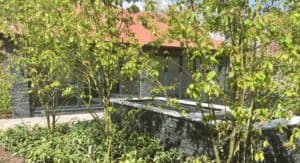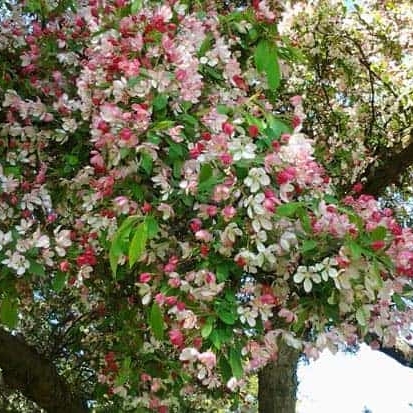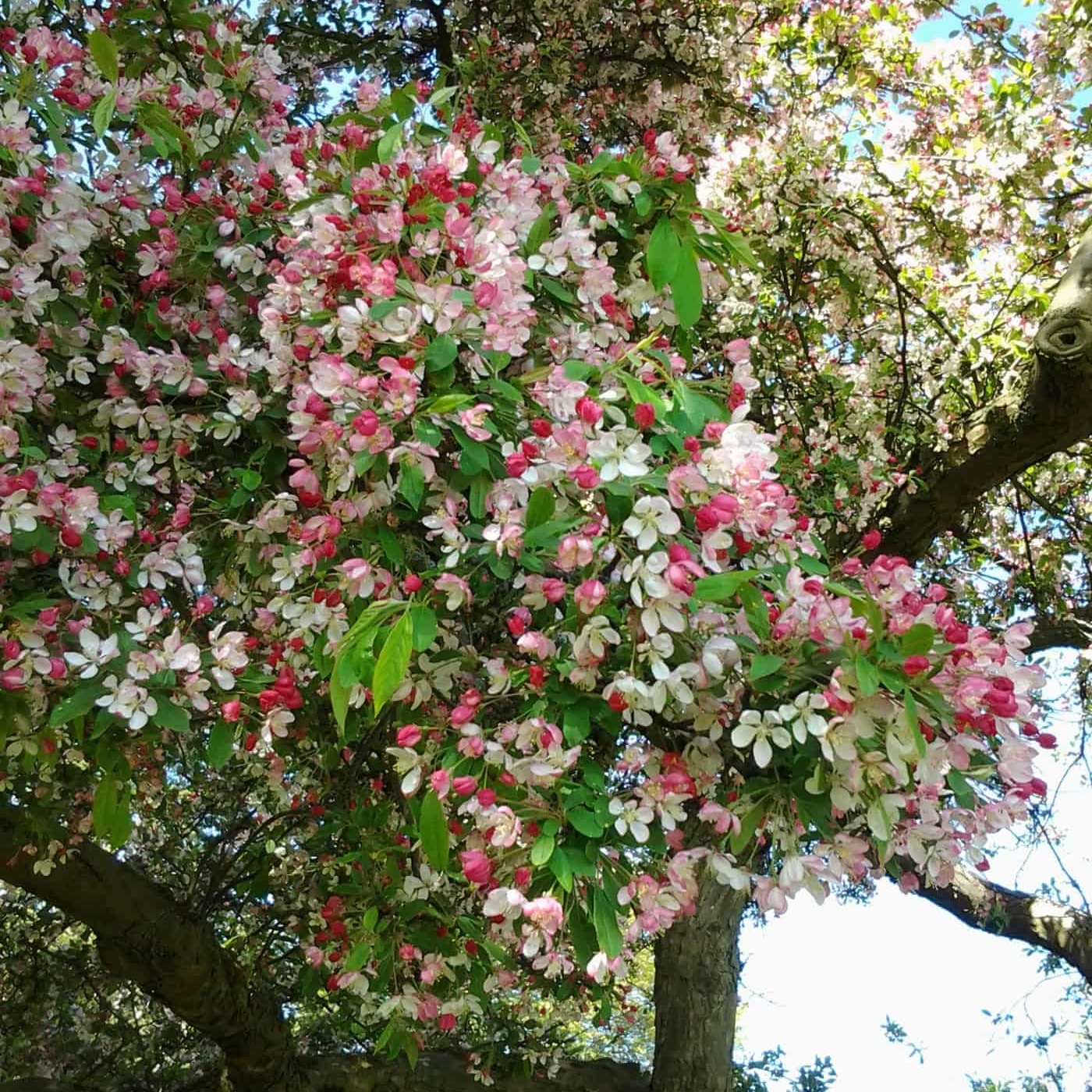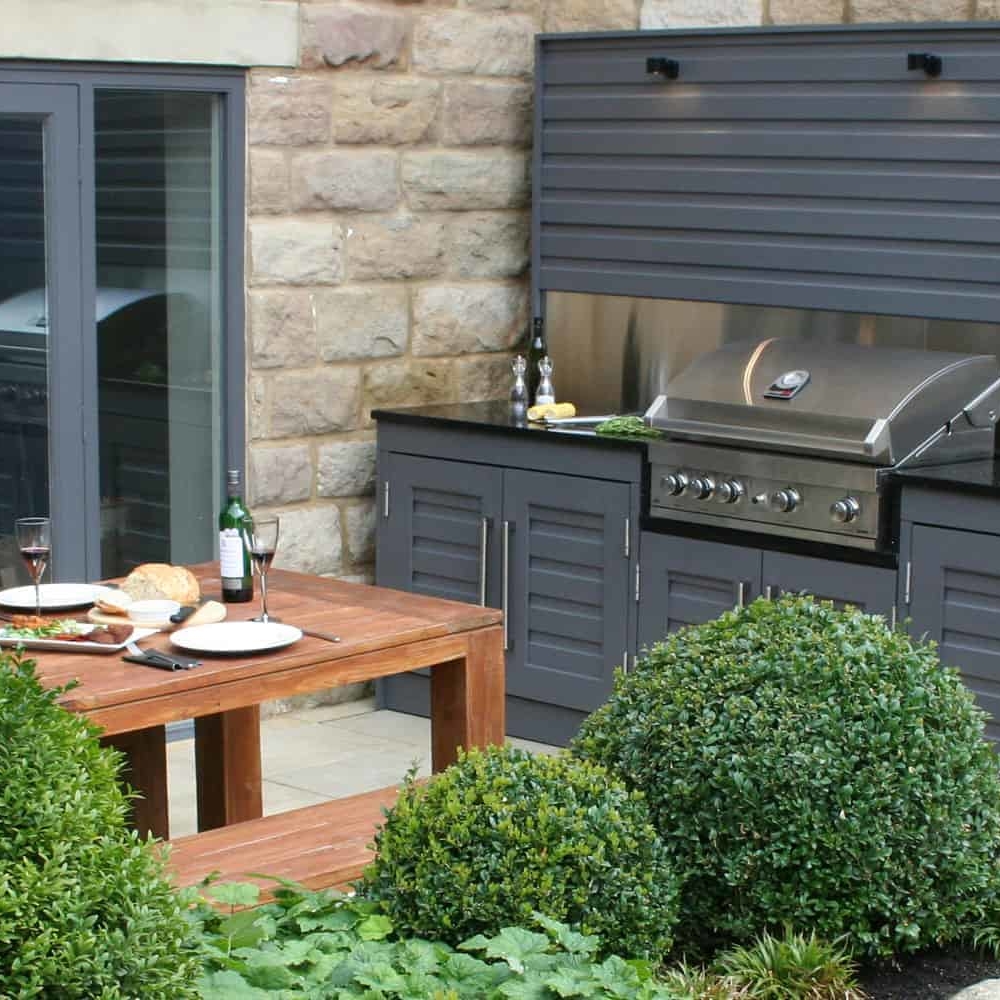Trees add an essential, irreplaceable element to any garden, and there are innumerable species out there to suit your plot size. They bring a strong architectural element all year round, and provide interest at different times of year dependent on their foliage, flowering and fruits. Some have bark that you can’t help but touch, and others are evergreen, bringing colour to the dull days of winter.
Saplings vs. mature trees
An important consideration when selecting your new tree is what age of specimen to buy. In many ways a smaller, younger tree is better. Its production and nurturing will have a lower carbon footprint, it’s easier to transport and handle, requires less strenuous hole digging, generally costs less and requires less time to establish. The chances of transplant shock occurring are lower.
Conversely, here at Bestall & Co we furnish our clients with more mature trees of several years. These have unbeatable benefits. They give instant impact, are less susceptible to animal or human damage, and add immediate value to your property.
When your garden re-design is complete and you have your new mature trees, the question becomes How do I care for these magnificent specimens? As touched upon above, there is a danger of larger trees suffering from transplant shock, which can ultimately kill them. We do our best during planting to retain as much of the soil around a tree’s roots as possible, and fortunately, after planting, you can do a few simple things to protect your trees too.
Spotting transplant shock
Transplant shock becomes obvious quickly in trees in leaf. Leaves will first begin to wilt and curl up, and almost simultaneously discolour. They may turn yellow, or red as though autumn has arrived early. After this, if shock is stronger or measures aren’t taken, leaves will drop and branches can die back. In effect, the tree is sacrificing superfluous parts to reduce water loss, while developing new root networks below ground.
Transplant shock is less evident in a tree’s dormant season. The first signs will come when it should be sending out strong, long new shoots and leaves. These may actually be short and stunted, and slow to grow. Again, follow the steps below to rouse your trees back to full health.
Shock tactics
The steps to take are straightforward and require no specialist equipment:
- Water your trees regularly. Ideally do this every other day, soaking soil at the roots for 2-3 minutes per tree. Water daily in prolonged dry weather. Be cautious if on heavy soils, as waterlogged roots will do little to improve the situation. Waterlogging reduces oxygen levels, and oxygen is as vital to tree growth as to our own survival.
- Give trees a balanced liquid fertiliser feed as directed. Beware fertilisers that contain a higher amount of nitrogen (N) – plants use this in lush foliage growth, which is currently unnecessary. It can scorch existing roots too, amplifying the damage. Phosphorus (P) and potassium (K) support root development more.
- Some websites recommend mixing a spoonful of sugar or three into water and applying this to the roots regularly. It’s supposed to give the tree an extra boost! Aspirin even gets a mention too.
- If we haven’t mulched the base of your plants, give this a go as well. Organic mulch, like bark chippings or compost, helps retain more of the moisture you’re adding. Apply in a 10-15cm layer around the base of the trees for maximum effect.
- This final step is the topic of much debate and it’s up to you whether to try it or not. Some horticulturalists advise pruning back up to one-third of your shocked tree, diverting its energy towards the roots rather than leaves and stems. Others say to avoid this, stating the trees need as many leaves as possible to provide energy for root development.
Living things
Use of large trees in planting schemes has huge advantages for the finished product, yielding an instantaneous effect. Remember though that these are living things. They need care, and unlike animals or children, cannot move and make their requirements known to us. We have to be vigilant and give a little extra attention, especially in their first year while they establish root systems. Doing so will reduce the chance of transplant shock and increase your enjoyment of them for years to come.
Kevin Gelder
Kevin joined Bestall & Co in late 2017 and brought a range of skills with him from a varied background. He gained a degree in French and Italian from Lancaster University in 2009 before successfully completing a PGCE at the University of Sheffield in 2011. He built on his communication skills through secondary language teaching, before working in healthcare administration.
Ultimately though it was his passion for plants and gardening which brought him to Bestall & Co as a member of the planting team, and although he's now moved back to an office based role, the articles he wrote whilst he was still with us live on.




